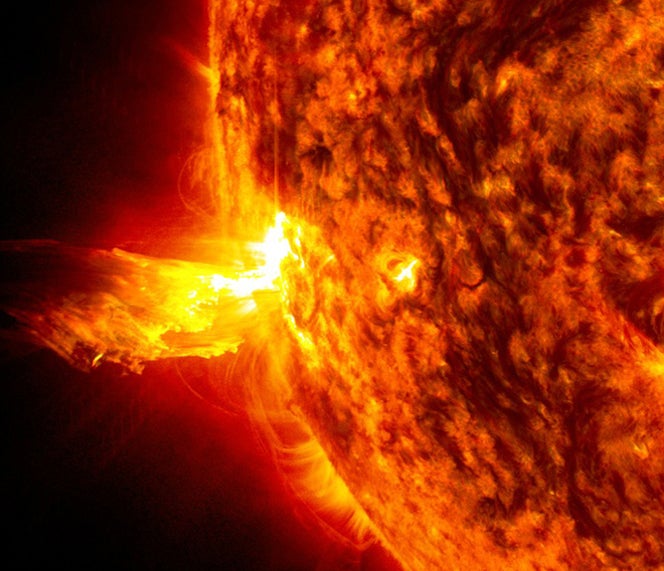
Introduction: Understanding Solar Flares
Solar flares are powerful bursts of radiation from the sun, driven by magnetic activity. As technology becomes increasingly reliant on electrical grids and satellite communications, understanding how these natural phenomena can affect our modern systems is more critical than ever. Recent studies have highlighted the potential of solar flares to cause widespread blackouts, raising awareness about the vulnerabilities in our infrastructure.
The Science Behind Solar Flares
Solar flares originate from the sun and can emit large amounts of energy in the form of X-rays and ultraviolet light. These happenings are part of the sun’s cycle, which undergoes periods of heightened activity roughly every 11 years. The current solar cycle, Solar Cycle 25, has shown a marked increase in the frequency and intensity of solar flares, raising concerns among scientists and officials alike.
Recent Events
In 2023, notable solar activity has been recorded, with multiple X-class flares, which are the strongest category. On July 14, a significant flare disrupted radio communications in parts of North America, serving as a reminder of the potential for larger geomagnetic storms to impact technology. The potential for disruptions is not just limited to radio but can affect power grids and global positioning systems (GPS) as well.
Potential for Blackouts
One of the most alarming consequences of solar flares is the possibility of blackouts. When a solar flare interacts with the Earth’s magnetic field, it can generate geomagnetic storms that disrupt electrical grids. The 1989 Quebec blackout, caused by such a storm, left millions without power and highlighted the need for preparedness against solar activity. Experts are concerned that as reliance on electricity increases, the potential damage from solar flares could also escalate.
Preparedness and Mitigation Strategies
To mitigate the impact of solar flares, utilities are researching advanced forecasting methods to predict solar activity. Furthermore, investment in hardening the electrical grids against electromagnetic pulses (EMPs) is becoming a priority for governments. Educating the public as well as devising emergency response strategies can help minimize the fallout from potential blackouts.
Conclusion: The Path Forward
As we continue to delve into the effects of solar flares on modern technology, the necessity of preparedness cannot be overstated. With advances in solar observation and grid resilience planning, communities can better equip themselves for future disturbances caused by solar flares. Understanding the risks and taking proactive measures is essential to safeguard our technological infrastructure and ensure that we remain connected, even during solar storms.

